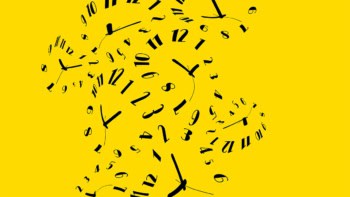Chanda Prescod-Weinstein reviews Cosmological Koans: a Journey to the Heart of Physics by Anthony Aguirre

Physicists often begin as wide-eyed students who are thrilled by the idea of studying the universe’s deepest and most fundamental mysteries. This grand vision is encouraged by a popular-science landscape that repeatedly produces media about the mysteries of cosmology, particle physics and quantum mechanics. Ultimately, many are disappointed. The first physics course that students take at university is focused on boxes sliding on incline planes, and cars driving on circular roads. Few students, and virtually none who aren’t high grade earners in their early classes, will get the opportunity to try their hand at research in what is known as “fundamental physics”. In some sense, Anthony Aguirre’s Cosmological Koans: a Journey to the Heart of Physics (or, for readers in the US and Canada, “A journey to the heart of physical reality”) may become part of the problem here. But it is also a reminder of what physics never has been and maybe should be professionally.
I approached Aguirre’s text expecting to find a unique approach to well-worn territory, popular science for non-scientists. The book adapts the idea of a Zen koan – a story (sometimes in the form of a riddle or poem) meant to provoke a Zen Buddhist practitioner’s intellect. As Aguirre explains in the introduction, he has no intention of conflating East Asian religious and cultural precepts with ideas in physics, but rather wants to use a practice similar to that of Zen Buddhism to provoke his reader into thought. Thus, we find 360 pages, organized into 51 koans, each of which provides insight into some aspect of fundamental physics, while also highlighting questions that are left unanswered, because they remain beyond our current understanding.
I was somewhat sceptical of the decision to centre the koans on a journey through Asia, since Aguirre is neither Asian nor Asian American. But eventually I found myself pleased with the choice, which both seemed like a nod of respect to the koan’s originating homelands, but also a conscientious move away from the frankly boring and repetitive centring of Europe in nearly every popular book about physics. In fact, Aguirre for the most part leaves the history of physics out of it entirely. The koans are of his own imagination, so they don’t function as a nonsensical alternative history of physics.
For all of our elaborate computational and experimental abilities, we don’t understand basic things like why time works the way it does
As a professional physicist, I was initially unsure of what the book had to offer me, but this is where Cosmological Koans truly excelled. Rarely do I read a book that reminds me of why physics was exciting to me in the first place, yet Aguirre has written a text that will not only be exciting for enthusiastic and attentive high-school students, but will also be refreshing for the professional physicist. Aguirre reminds us that for all of our elaborate computational and experimental abilities – from being able to take data that images the universe at about 380,000 years old to formulating intricate models of how dark matter behaves – we still don’t understand basic things like why time works the way it does.
In a world where science is generally expected to serve capitalist or state interests, there isn’t a lot of room for questions that touch on philosophy. Histories of physics repeatedly teach us that even my research area of particle cosmology has received sustained governmental support in the US because historically it grew out of the Manhattan Project. Even within this esoteric realm, there are limits. Spending years thinking primarily about the fundamental nature of time is not something a physicist can do for a living wage. The popular-science media complex that gives young people this impression is completely misleading. The questions that are most exciting to the general public simply don’t have the right kind of economic value in a capitalist system.
Aguirre himself has played an active role in challenging this status quo. In addition to his work as a cosmologist, he has spent a significant fraction of his time over the last 15 years trying to create opportunities for scientists to ask these basic questions through his leadership of the Foundational Questions Institute, better known as FQXi. It is from FQXi, for example, that I was able to get funding to study how race and gender shape social definitions of “the observer” and ultimately research outcomes in science. FQXi is also one of the major sources of funding for research in fundamental quantum mechanics.
Cosmological Koans, then, reads as a natural extension of this work. It’s possible that physicists are a more natural audience for the text than the general public, since it can get a bit heady mathematically. I might not give a copy to my mother, who will readily confess that she is overwhelmed by arithmetic. But I would strongly recommend it to students and professional scientists alike who want to stay grounded in what the big open questions in physics are. I also think the science fan who is willing to put a little work into the reading process will find this text to be enormously intellectually nourishing. For my part, I plan to keep my copy in my office, in case I ever forget why I do what I do or how mysterious the universe continues to be.
- 2019 Allen Lane 400pp £20hb



